Weekend chat is a consistent routine in my classroom. Every Monday, I like to spend some time with my students talking about their weekends and what we did without Spanish class all weekend. I have a few solid go to’s, and it’s nice to be able to reach into that bag of tricks and pull something out. It’s also super handy to have something like this ready to go every Monday – there’s no Sunday night, “wait, what are we doing tomorrow?” feeling!
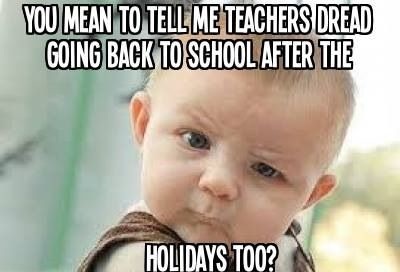
I do like to scaffold the activities for my students, especially at the beginning of the year when it’s been a long time since Spanish has happened, and before we have really dug into the preterite. So, here are my “Go To” Weekend Chat activities in a range of difficulty levels:
Watch the Video
1. La Cuenta de Profe
This is pretty self-explanatory from the name of the activity, but this is an input focused activity and a great way to start off weekend chat at the beginning of the year. I tell them about my weekend, elaborating as needed to up the interest, complete with wild gestures and multiple voices, again, as needed. Depending on what happened in my weekend, sometimes this becomes Pictionary with Profe Artista (even though artista I am NOT), because I inevitably forget that there’s a word or phrase we haven’t encountered yet.
One of my goals for next year at the beginning of the year is to create a few weekend chat presentations that include either Bitmoji or Snapchat story style versions of retelling what happened in my weekend, to include that visual support without the surprise art portion.
2. Quizlet Set “Yo Forms”
I found this set in Andrea Brown’s post, and I love the idea of using it to help the students really practice the yo forms, as well as prepare them for the next thing in my bag of tricks! They just spend some time with the vocab in whatever way you want via Quizlet. If I notice that I have a lot of students wanting to speak about a certain thing, I add it to this list of high-frequency phrases.
3. Escribe
Students write about their weekend until the timer is up. Then, I usually choose one student from each of my desk groups (about 5-7 students) to write one of their sentences up on the whiteboard. We go through them as a class, and we work on creating questions we could ask the people as a follow up. So, for example, if a student wrote “Yo fui al cine” we brainstorm things like, “¿Con quién fuiste?”, “¿Cuál película miraste?” and so on. As we progress throughout the year, this also sometimes turns into an interview process as we chat with a few students a little more in-depth, depending on their comfort level. My goal here with them is to encourage them to be able to connect and carry on a conversation so we don’t have exchanges happening like, “Yo fui al cine.” “Yo fui de compras.” – just listing what they did, but not a conversation with listening and appropriate responses.
4. “Human Bingo / Find Someone Who”
I love Find Someone Who activities to get the kids up and moving, and talking to other people. This also models the “follow through” question idea from above. If students answer yes, they ask the follow-up question. It also prepares the speaker to respond to the follow-up question, rather than just answering with sí or no. Snag this one for free!
5. Habla
Students in my class seat in groups of 4-5. In this activity, I put a timer up on the screen, and each student speaks for a set part of the clock. If it’s a 2:00 minute timer, each student speaks for roughly 30 seconds. This is also where the questioning comes in – I encourage the group members to listen and ask the speaker more questions about the information they share, then rotate speakers throughout their group, until everyone has a turn as the center of attention.
This also looks a little different as we progress through the year. In the beginning of the year, I often begin with “Escribe” and then follow it with “Habla”. Towards the middle of the year, there is just a little think time prior to speaking in a small group. As we get into spring, the length of time and the structure changes. Instead of it being the group of four, I’ll start moving it towards Face Partners, or Shoulder Partners for a minute of open conversation about their weekends, and gradually increase that time, depending on the class and how the students are doing!
An option to provide some more support in these conversations are my Weekend Chat Conversation Cards – I just print off enough sets for groups or pairs and let them go! I have a version with some extra support and a version that just has the questions so I can choose which ones I want depending on where they are at!
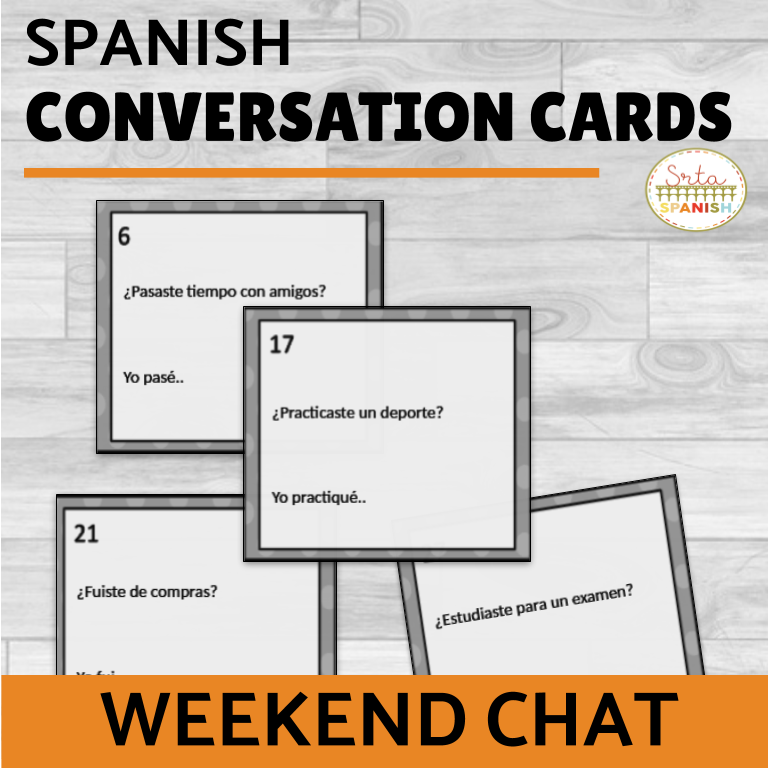
Another option is to do a Kagan structure that is called “Numbers Walk”. Basically, you pick a few students in each group to switch groups. This gives them a different person to talk to than usual, and also changes the comfort level a little bit
6. ¡MENTIROSO!
We just played this game for the first time this year last week, and we all had a great time! No one wanted the game to end! Basically, ¡MENTIROSO! is Two Truths and a Lie, if you have ever played that. I have them write 3 sentences about their weekends: two that are true, and one that is a lie. They write their names on it, mark the lie, then give it to me. Then, each group gets a mini-whiteboard and a marker. I let them know whose sentences they are, then I read the sentences twice. Groups have a little bit of time, then hold up the whiteboard with their guess as to which is the lie. If it is a person from that group, the group is exempt from guessing. Groups get a point if they correctly guess which sentence is the lie, but, if NO ONE guesses, I yell, “¡MENTIROSO!” and the successful liar’s group gets a point. Great for repetitive input in the preterite, with tons of focused buy in!
7. After Break Weekend Chat
When we have more than two-three days off, I like to do a more structured writing and illustrating activity. I have a sheet with questions or sentence starters, and space to illustrate what they’ve done that are differentiated for all of my levels. These are great to have printed and ready in a file to go for those days you got home after a long weekend and just need something handy! You can also do a gallery walk activity afterward. What did he/she do? Where did he/she go? or a quick speak and share activity with the whole class or small groups.
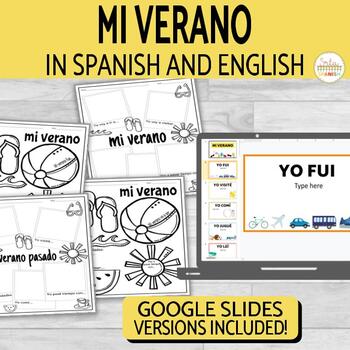
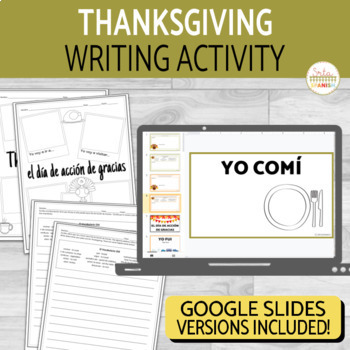
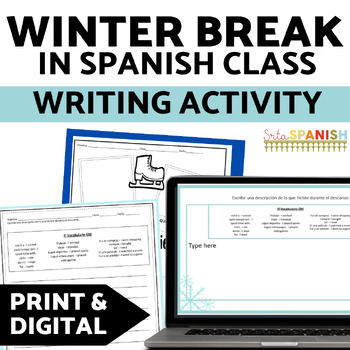
● Spring Break ● Summer Break ● Thanksgiving Break ●Winter Break
Grab the Instructions!
I have a set of Google Slides with the instructions/visual support for several of these weekend activities so I can just open the presentation and go! Often I’ll just copy and paste the applicable slides, or just open up the presentation and use it for a whole class period on Monday. Please feel free to make a copy or use however is useful for you. Try just picking ONE strategy and using it, then come back and try out a new one! You’ll love having weekend chat as your go to Monday plan.
Grab these Slides from my free resource library!


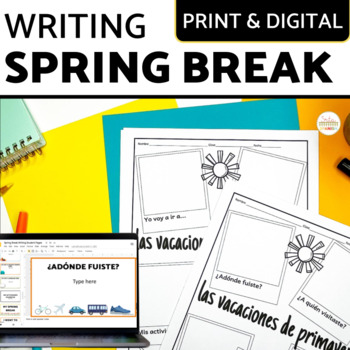

This is awesome! Do you have the question sheet you mention for human bingo available for sale or to share? Muchísimas gracias!
Yes! The title of the activity is a hyperlink to a shareable version of the doc. Click and use!
Love these extra ideas. I just started this routine today with my students and I give them a cheat sheet to use, but I love the rest of your ideas to change it up every once in awhile!
I like the idea of a cheat sheet too! I’m sure they love having it to support them while they get into the routine.
What did your cheat sheet consist of?? Would you be willing to share?
Love your activities!
Gracias !!
Thanks! I’m so glad you like them!
This is all in Spanish?
Yes! There are moments during my story-telling that I’ll need to clarify a word/phrase, but the emphasis is on Spanish. We definitely start with more scaffolded and supported activities, then gradually move down the list to ones where they are working on their own more!
I continue to be amazed of the amount of resources and wealth of information your are giving us. First and foremost Thank you. I am on my second day and I just finish Routines and I have a question, are any of these 7 suggestions (and I can see how they can progress and which are more complex to do at different times of the year) take the whole class? or just as an opening? Some I can see taking longer than others. My classes are of 42 minutes. At the beginning of the year I see this as too long but at the same time almost each activity, what ever I pick that weekend, seem to take a minimum of 20-30 minutes. Let’s say it takes 20 min, the rest of the time you jump in on whatever topic you are covering?
Thanks. Will the answer be only on this post?
You can DEFINITELY tweak it to fit your needs in terms of how much class you’re taking! At the end of a break I’ll usually pick one that takes the whole class. If it’s just a regular Monday, then yes! I’d use 15-20 minutes for the routine, then go onto our lesson as planned! Exactly! Sometimes the nice thing is if it’s Sunday and you’re tired and don’t have a lot planned..well – like you pointed out they could easily stretch to your class period! and then your Monday is planned and you can relax and enjoy your Sunday! 😉
Do you do activities like this with beginners who don’t know the preterite tense yet?
Yes! This is how I intro preterite, actually.